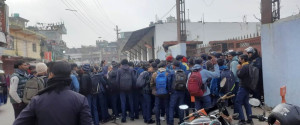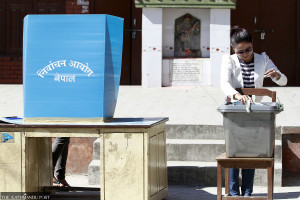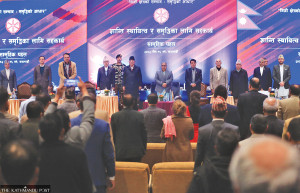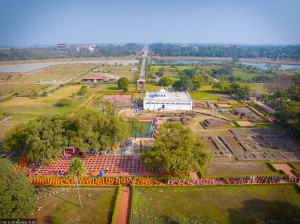National
A decade after the devastating 2015 earthquake, is Nepal any safer?
Kathmandu’s quake-safe open spaces are disappearing, experts warn. Government shifts blame to local units, who say they lack expertise and resources to enforce building codes.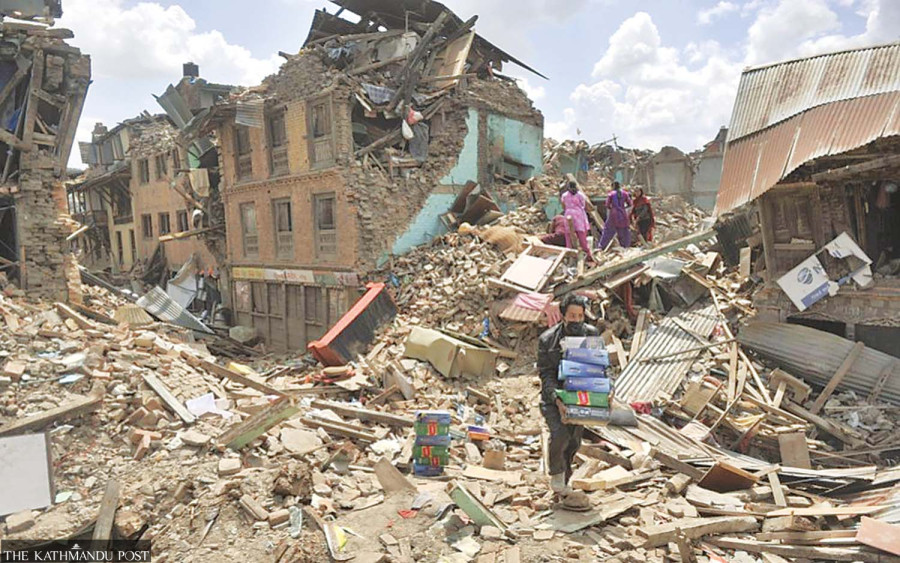
Purushottam Poudel
Friday marks the tenth anniversary of the devastating earthquake that struck Nepal on April 25, 2015, claiming nearly 9,000 lives and injuring over 22,300 people.
The major quake measuring magnitude 7.8 and its numerous aftershocks devastated the country, damaging more than half a million homes and other structures, according to official records.
After the 2015 earthquake, Nepal continued to experience aftershocks for an extended period.
As highlighted in the government’s Post-Disaster Needs Assessment (PDNA) report, Nepal ranks as the 11th most earthquake-prone country globally.
“Since the first recorded earthquake in 1255 AD, which killed a third of the Kathmandu Valley’s population, including King Abhaya Malla, Nepal has witnessed a major earthquake every few generations,” the report states. The last significant earthquake before 2015, with a magnitude of 8.4 in 1934, resulted in over 10,000 deaths in the Kathmandu Valley. Significant earthquakes also occurred in 1980, 1988, and 2011, all of which caused substantial loss of life and property.
After the 2015 disaster, Nepal experienced jolts of varying magnitudes frequently. In November 2023, a 5.3 magnitude earthquake struck Jajarkot in western Nepal, resulting in the tragic loss of 153 lives.
In response to the 2015 disaster, the Ministry of Federal Affairs and General Administration introduced the Town Development, Urban Planning, and Basic Guidelines on Building Houses, 2015, to reduce casualties in future disasters.
However, despite introduction of these policies, experts warn that the initial resolve to improve safety standards has faded over the years.
Amod Mani Dixit, president at the National Society for Earthquake Technology (NSET), an NGO dedicated to earthquake preparedness, noted that although significant policy decisions, such as enforcing stricter building codes, were made, they have not been effectively implemented.
“There are serious issues in the monitoring of infrastructure construction,” Dixit told the Post. “Unfortunately, no corrective measures have been taken.”
Dixit emphasised the need for commemorating disasters as important occasions of public education and preparedness. “Other countries establish museums with earthquake memorabilia to maintain awareness. In Nepal, however, these crucial matters are often ignored by the authorities.”
Government officials, meanwhile, contested Dixit’s claims. Kali Prasad Parajuli, spokesperson for the Ministry of Federal Affairs and General Administration, asserted that the government has fully enforced the recommended policies with regard to implementing building codes and delegated authority to provincial governments.
“Provincial administrations now have the power to set building standards, though these must be at least as stringent as those of the federal government,” said Parajuli. “Many municipalities are actively demolishing structures that breach building codes.”
Most activities related to town development, urban planning, and open spaces, as well as building new houses, are overseen by the Ministry of Urban Development, said Parajuli.
However, an official at the Ministry of Urban Development argues that their role is limited to coordination, as the local governments are responsible for overseeing such activities.
“I doubt rural municipalities bother getting building maps approved before construction, since they are not required to do it. Map approval is compulsory only in municipalities,” said Narayan Prasad Mainali, a joint secretary at the Urban Development Ministry. “But the code of conduct implemented by the government soon after the earthquake of 2015 should have been implemented by local governments.”
Mainali argued that they are not aware of what the local level governments are doing with regard to implementing the building code.
While the central government claims the implementation of the code of conduct for building houses falls under local units, local governments on the other hand claim the absence of technical experts to support their supervision.
Nimesh Mishra, the chief administrative officer of Melamchi Municipality in Sindhupalchok district, one of the most affected areas by the devastating 2015 earthquakes, claims that local residents have partially followed the building code enforced by the government.
“However, the place is still prone to a multi-hazardous situation, since landslides and floods have continuously hit the area,” Mishra said. “Even the houses built following the building code have been impacted.”
Barpak of Gorkha was the epicentre of the 2015 earthquake. However, following years of the quake, people in the area seldom follow the building code of conduct established by the government, says Bishnu Prasad Bhatta, the chair of Barpak Sulikot Rural Municipality.
“People who received reconstruction aid from the government after the earthquake followed the building code, but the people building houses these days do not follow such conduct.”
Dixit says the new constitution has empowered the local level but without technical know-how. He thinks that the local units alone cannot monitor these tasks properly in the absence of technicians.
The 2015 guidelines state that the house structure of a commercial building should cover no more than 50 percent of its plot, while the structure of residential houses should be limited within 70 percent of the plot. Experts claim these codes are routinely ignored.
Architectural engineer Susan Vaidya of Livable Kathmandu initiative remarked that in urban areas where land prices are extremely high, compliance is often impractical. “The government must formulate more realistic standards,” he said.
Experts agree that ignoring the lessons of the past puts Nepal at grave risk. The country lies on a major tectonic zone, where the Indian and Tibetan (Eurasian) plates collide.
The officer of the National Earthquake Monitoring and Research Centre stressed preparedness saying another large earthquake could strike Nepal at any time.
“Nepal sits in one of the world’s most active continental collision zones,” the officer explained. “The Indian plate continues to push northward by about four centimeters a year. This builds pressure until rocks eventually fracture, causing earthquakes.”
Dixit points out that the government has failed to protect and promote open spaces, which are vital during emergencies, especially in urban areas. For instance, the Bhainsepati area in Lalitpur was earmarked as open space after the 2015 quake, but is now occupied by ministerial residences.
The open space that has been breached in the core residential area is located in Bhaisepati, where a new minister's quarter has been constructed.
There were at least eight hundred eighty-eight open spaces throughout the Kathmandu Valley before the 2015 earthquake. What is the condition of those open spaces at present? Dixit questioned.
During the 2015 crisis, open spaces played a critical role, with many Kathmandu residents taking shelter in fields near the Nepal Army Officers’ Club at Sundhara, Bagdurbar. Even these areas are now covered by buildings.
Government officials also agree that space constraints in cities like Kathmandu pose a serious challenge during major disasters. “Yes, there was a discussion post-earthquake about preserving open spaces, but availability of land is a genuine concern in urban zones,” they acknowledged. “In some instances, buildings were constructed out of necessity.”




 6.84°C Kathmandu
6.84°C Kathmandu




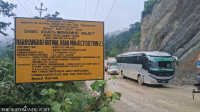




%20(1).jpg&w=300&height=200)
